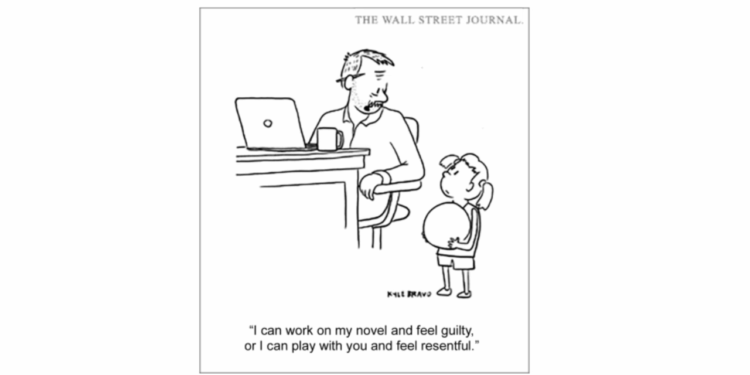When Charles Preston pitched the idea of a daily cartoon to the editors of the Wall Street Journal back in 1950, he framed the proposal as something that would add some pizzazz and levity to an otherwise dry and sober editorial page.
At the time, “gag cartoons,” as they were known, ran in popular magazines like the Saturday Evening Post, Look and Collier’s. But in a business newspaper?
Preston explained that we needed to “laugh with others in order to laugh at ourselves.”
Editors liked the idea and decided to put Preston in charge of the new feature. Launching on June 6, 1950, they titled it “Pepper…and Salt.”
The witty, gentle, and sometimes pointed cartoon continues its historic run to this day. Whether jabbing good naturedly at entrepreneurial start-ups, office politics, technology or countless other themes, it regularly leaves readers with a smile.
Satirical humor works best when it contains a grain of truth. This is one reason why the Babylon Bee has skyrocketed in popularity since its debut in 2016. Now owned and run by Seth Dillon and his brother, Dan, the site often pokes fun at stupidity and steps on the toes of many of the people behind the nonsensical news.
“Pepper…and Salt” strives to tell an entire story in a single frame and in no more than a sentence. But in this Wednesday’s edition, despite those limitations, the featured cartoon delivers not only a laugh but also a stinging commentary on the root of America’s declining birth rate, family dysfunction and general domestic unhappiness.
That’s not easy to do in a single cartoon frame, but the artist nevertheless deftly pulled it off.
In the cartoon, we see a middle-aged mustached man at a desk with an open laptop computer. A young, pig-tailed girl stands beside him holding a large ball. We assume the man is the girl’s father and the daughter has invited him to join her.
“I can work on my novel and feel guilty, or I can play with you and feel resentful,” the man tells the child.
There, in a nutshell, is why we’ve fallen below the birth replacement rate.
Since 1960, when the U.S. total fertility rate was 3.5 children per woman, down to 1.599 in 2024, couples have shown a declining interest in having a lot of children – or any at all.
While just a cartoon, the suggestion that an increasing number of couples resent being pulled away from their careers or hobbies for the sake of caring for another human being bears out in interviews, studies – and the factual annual data.
To be sure, children can be challenging, exhausting and even exasperating at times, but after the promise of our personal salvation, they’re God’s greatest gift to wives and husbands.
But the first part of the father’s reply reveals another unhealthy understanding of parenting in America. Why would the dad feel guilty working in lieu of playing ball?
Once again, it’s just a fictional cartoon, so any deep analysis risks over analysis. But a belief in child centric parenting is suggested. The idea that mothers and fathers must wait on every whim of a child is not healthy. No parent should feel guilty about earning a living, though every parent must balance working too much with working too little.
Wise and healthy mothers and fathers don’t resent laying a project aside to play with a son or daughter. Instead, they consider it a privilege, recognizing that the child won’t be a little child for long and won’t be asking to play ball in the blink of an eye.
Don’t resent children – but rejoice in them.




![Hegseth Demands Fitness Requirements, Says 'Fat Troops' 'Not Who We Are' [WATCH]](https://teamredvictory.com/wp-content/uploads/2025/09/Hegseth-Demands-Fitness-Requirements-Says-Fat-Troops-Not-Who-We-350x250.jpg)






